We have reached the end of the 43rd Big Garden Birdwatch, which took place between Friday 28th and Sunday 30th January. Run by the RSPB, it’s one of the largest citizen science surveys in the UK and encourages the public to record their garden birds and submit their results. Over a million people took part last year, recording over 17 million birds, helping the RSPB gain an accurate understanding of how bird populations are faring.
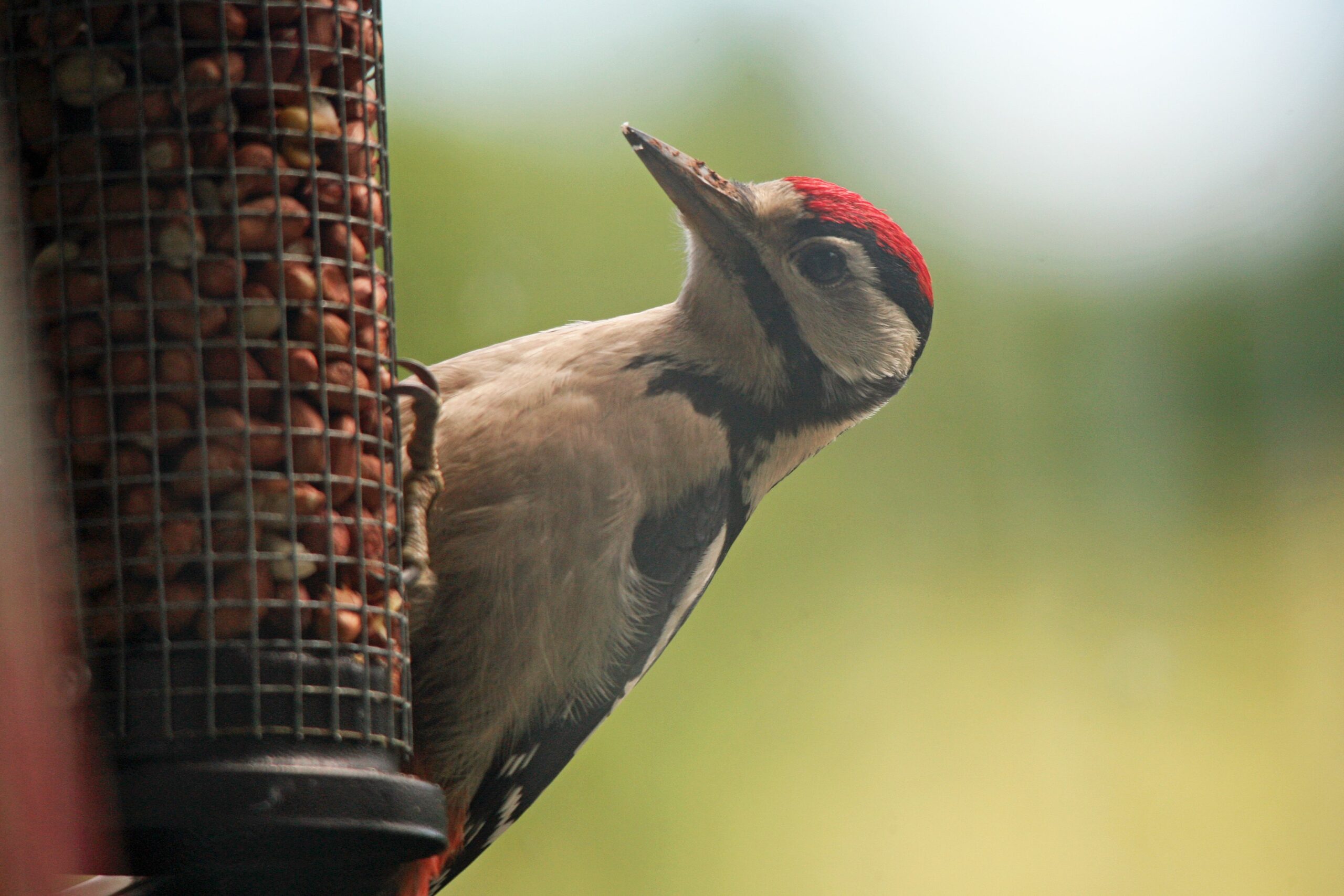
There’s still time to submit your results if you took part over the weekend, the final date to let the RSPB know what you saw is 20th February. But don’t worry if you didn’t get to take part this year; it is an annual event, so make sure to look out for it next year! To take part, all you need to do is spend 1 hour counting the birds that land in your garden, balconies or outdoor spaces. It’s important to count the highest number of each species, rather than the total amount you see over the hour, otherwise, you might end up counting the same individual twice. You can submit your results online on the RSPB website. To help you identify certain species, take a look at our range of field guides, as well as our previous identification guide blog posts here.
Over a million people took part last year, recording over 17 million birds, helping the RSPB gain an accurate understanding of how bird populations are doing. They now have over four decades of data, showing the trends in UK bird populations, which helps them which species are faring ok and which are in decline. Both goldfinches and great tits have benefited from gardens, with goldfinch populations in gardens increasing by 50% over the last decade. However, the Big Garden Birdwatch has also shown that thrushes and greenfinches sightings have decreased, with greenfinch recordings down by 65% and thrushes by 78%. We hope that more people have taken part this year, and, as always, many of our staff got involved. Scroll down to see what we found.
We’d also love to see what you’ve spotted if you took part – let us know in the comments below.
Results
Beth saw the highest quantity of birds this year, at 32 individuals:
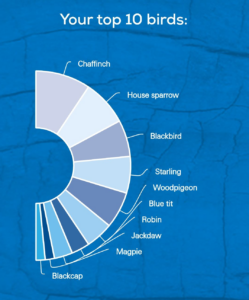
Woodpigeons: 4
Blackbirds: 4
Chaffinches: 6
Magpies: 1
Robins: 2
Starlings: 4
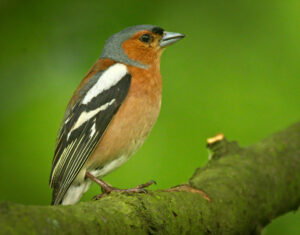
Sparrows: 5
Jackdaws: 2
Blue tits: 3
Blackcaps: 1
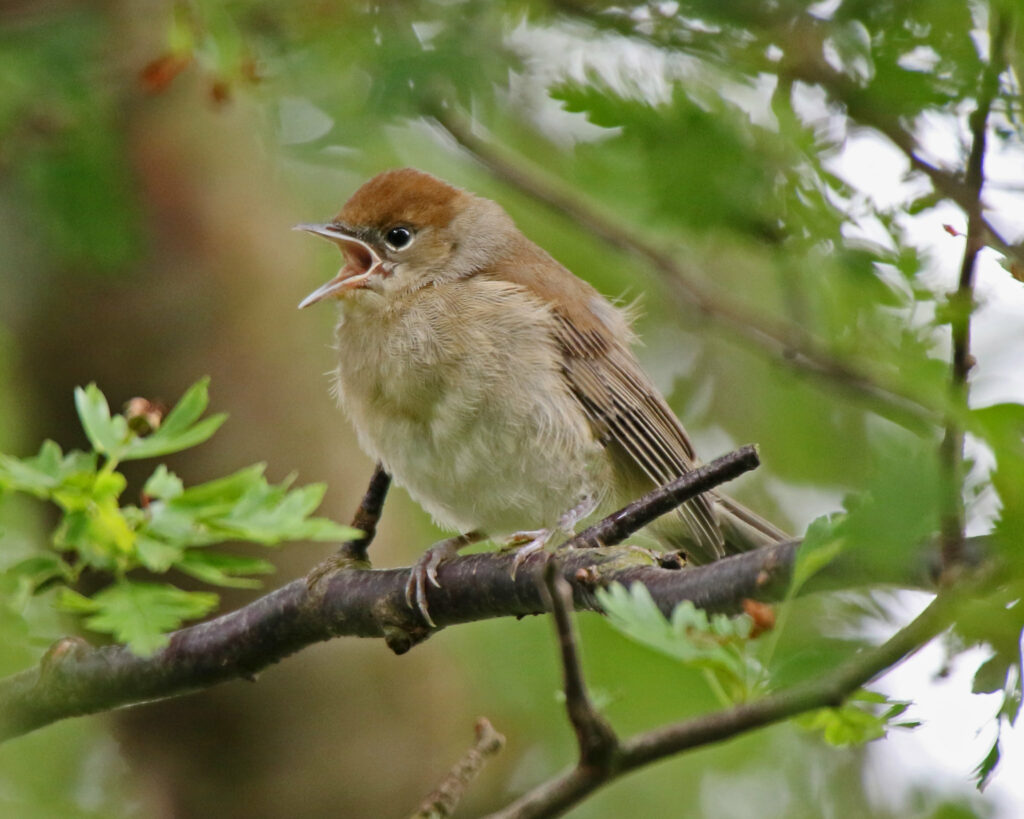
Over the weekend, Catherine was visited by a large flock of starlings, as well as the most blue tits of all our staff results this year. She also managed to spot a reed bunting, an amber listed bird in the UK:
Starlings: 9
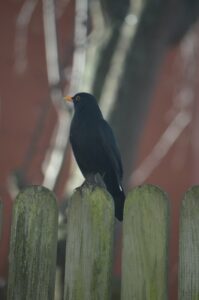
Crows: 2
Blackbirds: 1
Magpies: 1
Blue tits: 7
Woodpigeons: 2
Goldfinches: 1
Great tits: 1
Reed bunting: 1
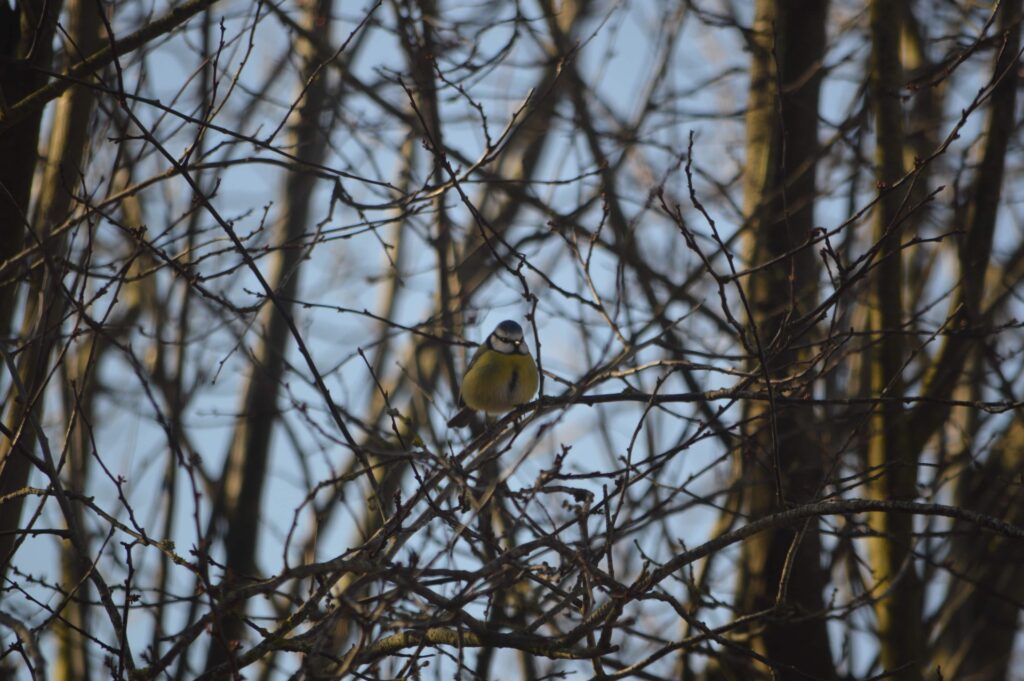
Ian managed to spot the largest number of species this year, including a wren (Troglodytes troglodytes), another amber listed species:
Starlings: 1
Blue tits: 2
Woodpigeons: 4
Blackbirds: 1
Robins: 1
Great tits: 2
Magpies: 2
Dunnocks: 1
Goldfinches: 2
Blackcaps: 1
Wrens: 1
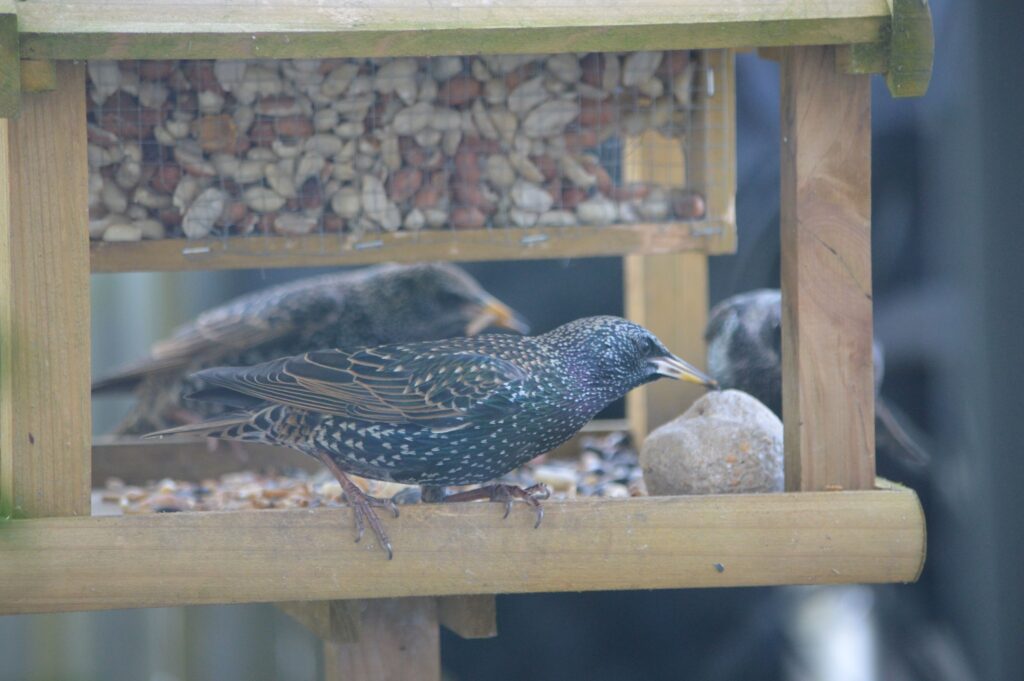
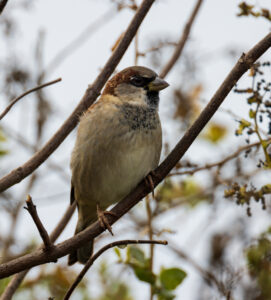
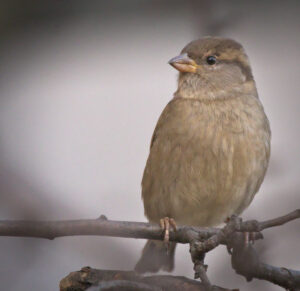
I completed my Big Garden Birdwatch in East Sussex:
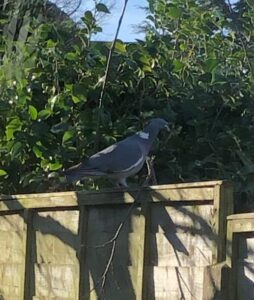
Great tits: 2
Blue tits: 1
Sparrows: 4
Starling: 1
Woodpigeons: 2
Robins: 1
Blackbirds: 1
Notably, one of the woodpigeons picked up a stick from my garden and flew off with it, a potential sign of nest-building behaviour.
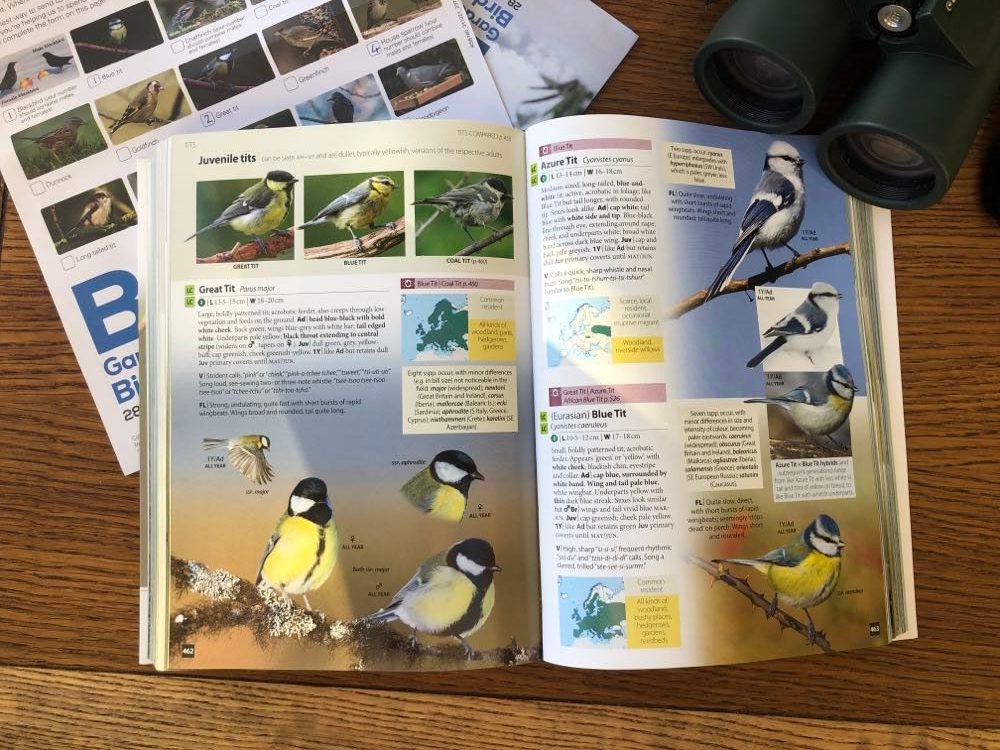
Sabine had the highest number of jackdaws, one of our most recorded species in 2021:
Jackdaws: 6
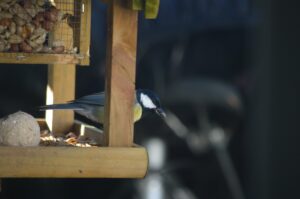
Woodpigeons: 3
Blue tits: 2
Dunnocks: 3
Robins: 2
Great tits: 1
Magpies: 1
She also managed to capture this beautiful footage of one of her Robin visitors:
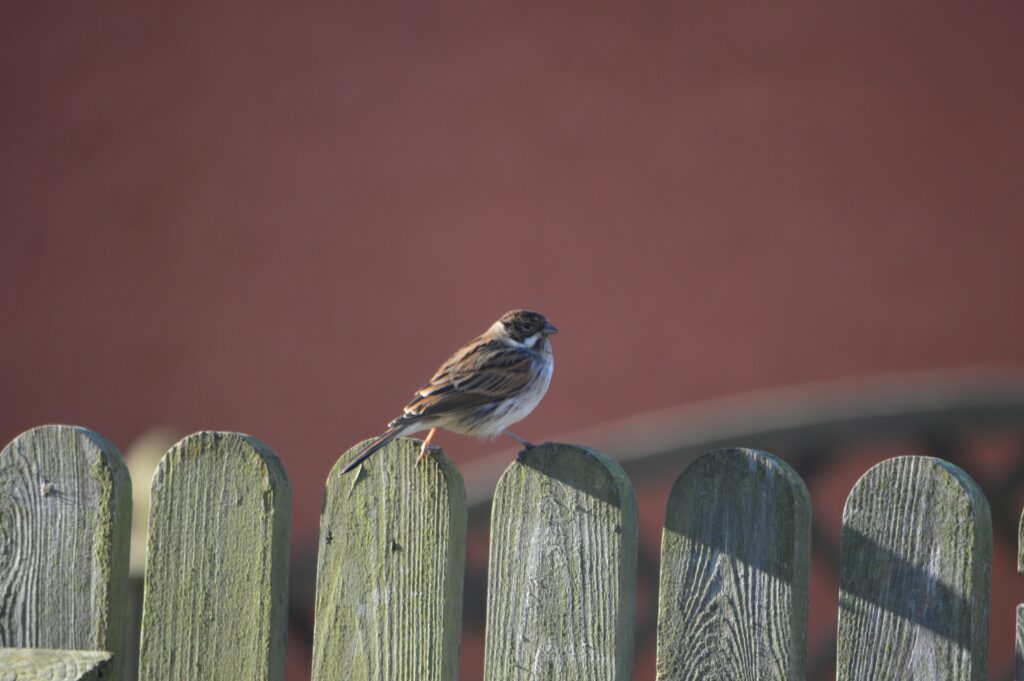
Our total
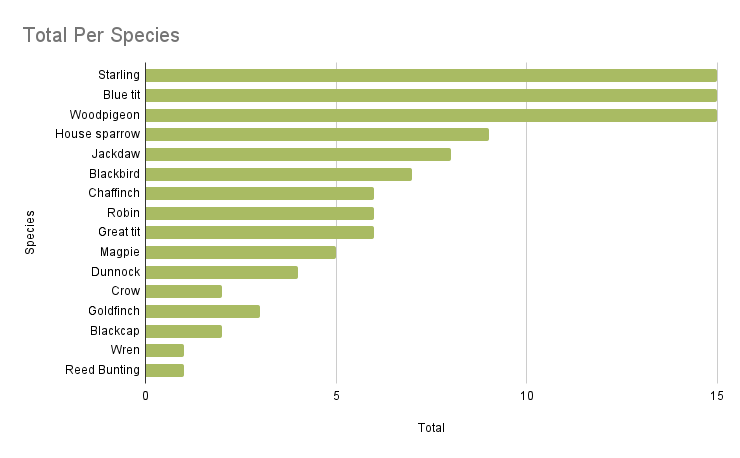
In total, we saw 16 different species and 105 individuals across our 5 gardens. Our most common bird species were starlings (Sturnus vulgaris), blue tits (Cyanistes caeruleus) and woodpigeons (Columba palumbus). Last year, our most common were long-tailed tits (Aegithalos caudatus) and jackdaws (Corvus monedula), and in 2020 it was house sparrows (Passer domesticus), followed by great tits (Parus major). It will be interesting to see how our results compare to the overall results of this year’s Big Garden Birdwatch.
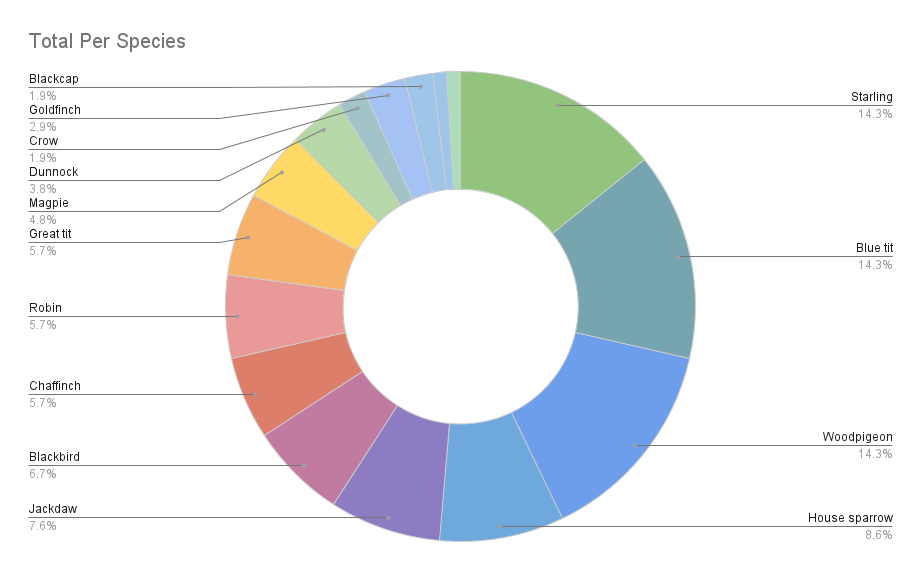
The RSPB
For more information on UK garden birds, the Big Garden Birdwatch and how you can help them, please visit www.rspb.org.uk. Here you will find a wealth of information to help you find and identify UK bird species.
